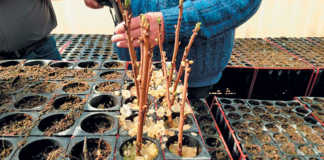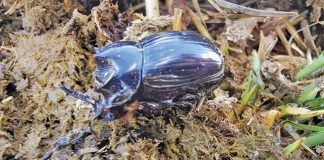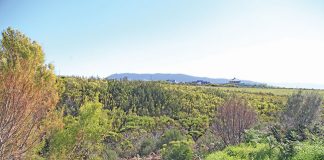The Forelle cultivar has always been a headache for the pear industry. When picked too early, they can be astringent. Picked too late and not subjected to long enough cold storage, they are prone to mealiness. To address this problem, the industry prescribed mandatory cold storage of 12 weeks at 0,5°C after picking.
However, this has a negative impact on shelf life and has resulted in a glut of fruit by the time the pears were market-ready. It also led to a gap between Forelle pears’ availability in the market and that of the other South African ‘blush cultivars’, Rosemarie and Flamingo. Chile then cashed in on this gap by also producing Forelle pears and sending them straight to market after harvesting.
FEMA programme
Dr Ian Crouch, Experico’s research and development manager, suggested that Forelle pears be treated like apples. So instead of picking the pears early, they are left on the trees for two to three weeks longer, resulting in a riper, sweeter fruit at harvest. Further ripening is prevented through the growth inhibitor 1-methylcylopropene (MCP), which has been commercially available as SmartFreshSM since 2002.
Crouch named this intervention the Forelle Early Market Access (FEMA) programme. He also received the Hortgro Researcher of the Year award for his work on the programme.
Impressive results
Over the past 13 years, the programme cost the industry about R4,5 million, but in the past four years it has resulted in a benefit of about R42 million. It is estimated that the industry will benefit by a further R100 million over the next four years.
These impressive rewards were achieved by changing the way pears are eaten, thereby creating a completely new product. “Instead of a ‘soft and juicy’ pear, the FEMA pears are ‘crisp and sweet’. They are sold under a ‘crisp and sweet’ label to distinguish them from the ‘soft and juicy’ pears,” says Crouch.
He adds that market research showed that, while soft and juicy pears were preferred in the UK, consumers in Europe and the Middle East preferred ‘crisp and sweet’ pears. The programme has therefore opened new markets for this cultivar.
FEMA pears can also be exported to Europe up to nine weeks earlier than normal protocol pears, which results in a more favourable market distribution and better prices in general.
FEMA pears realise on average R23 per 12,5kg carton more than normal protocol pears. SA exports a total of about 3,4 million cartons of Forelle pears per year. In 2011, about 20 000 cartons were exported under the FEMA programme, which increased to almost 750 000 cartons in 2013.
It is estimated that SA will export 1,2 million cartons this year, while the remaining Forelle pears will still be exported under the old regime, Crouch says. Although this number could increase slightly in future, a too-great increase will cause a market peak. The FEMA programme is now also being tested on other pear cultivars, such as Abate Fetel, Williams Bon Chretien and Packham’s Triumph.
Email Ian Crouch at [email protected].













